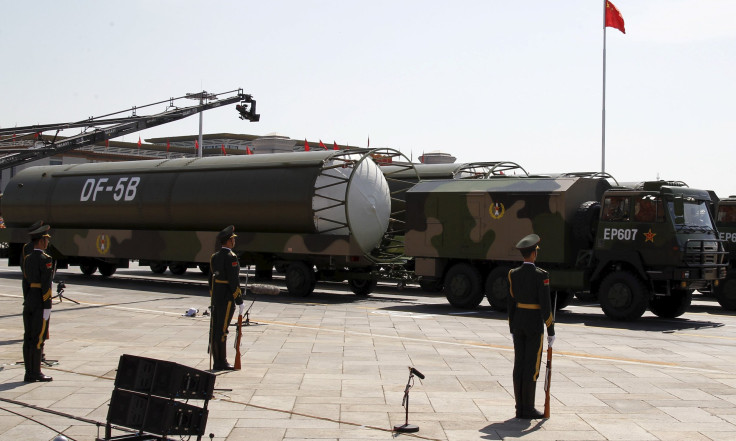China's New Missile Defense System Aimed At United States And South Korea? Arms Race Leads To 'Powerful' Attack Weapon

China has unveiled a third-generation surface-to-air missile system that can defend against short- to long range and strike low- to high altitude targets amid growing tensions with South Korea and the United States over China’s territorial claims in the South China Sea. China's air force will oversee the anti-missile system, spokesman Shen Jinke said Monday on the Ministry of Defense website.
"Through innovation, ground-to-air defense troops are able to deal with far-range, medium-range and short-range missiles which can come in on high, medium and low altitudes," Shen said. "The capability of China’s air defense and anti-missile systems has greatly improved in the information age we live in. Our ground-to-air forces are now a powerful force to safeguard China’s airspace sovereignty."
China has increasingly warned the U.S. and South Korea in recent years to respect its sovereignty in the South China Sea, which is contested by island nations across Asia, while also warning South Korea that it does not approve of its decision to deploy a missile shield that uses U.S. radars on the Korean peninsula. South Korea claims the shield is necessary to guard against potential attacks from North Korea, which has threatened to use nuclear weapons. North Korea is China's ally, but South Korea and China have robust trade relations.
China's missile defense system consists of new missiles and launching systems, Shen said.
The air force is "transforming from territorial air defense to being capable of both attack and defense," Shen said. "We will fully upgrade our strategic early warning, air strike, anti-aircraft and anti-missile, information countermeasure, air landing, strategic aerial delivery and comprehensive support."
Tense relations between China and its neighbors have seen growing threats of military intervention. Yanmei Xie, senior China analyst with the International Crisis Group (ICG) in Beijing, told the Washington Post last week that an arms race is underway in the region.
"Before, the region was in the process of economic integration, the building of multilateral institutions, and regional governance by consensus," she said. "But in recent years, that has all been unraveling. In its place you have an arms race and the building-up of deterrents and the fracturing of multilateral institutions. It’s not good."
China pledged last month to build next-generation cruise missiles with high level of artificial intelligence. "We plan to adopt a ‘plug and play’ approach in the development of new cruise missiles, which will enable our military commanders to tailor-make missiles in accordance with combat conditions and their specific requirements," Wang Changqing, director of the General Design Department of the Third Academy of the China Aerospace Science and Industry Corp., said. "They will allow commanders to control them in a real-time manner, or to use a fire-and-forget mode, or even to add more tasks to in-flight missiles."
© Copyright IBTimes 2025. All rights reserved.






















